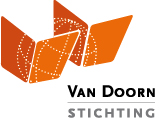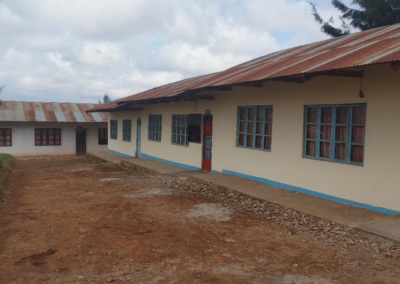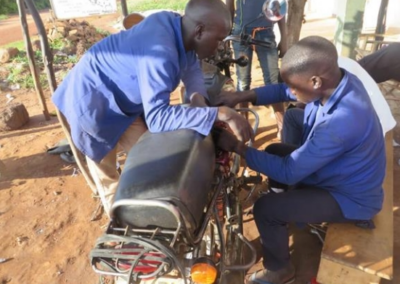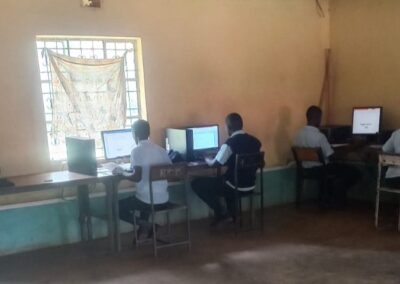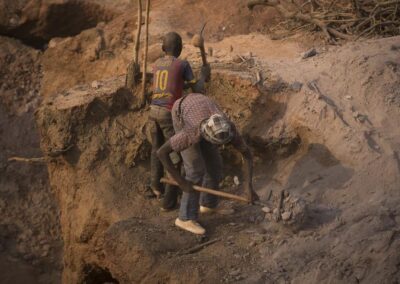In 2016 we supported the Levozy Self Help Group in converting a workshop in Dagoretti into a small training center. The shed of old rusty corrugated iron sheets have made way for a “real” building with a foundation, roof, walls, windows and doors and school furniture. Here street children and school drop-outs are offered vocational education.
In 2017 assistance was provided for the development of a training plan and training modules for the training center and in 2018 additional resources (machines and tools) were made available via ToolsToWork.
A great success in which our donations have been spent well and carefully and are properly justified by the Levozy Self Help Group!
Project has been executed successfully!
Amount donated for phase 1: € 4,500.-
Amount donated for phase 2: € 8,800.-
Amount donated for phase 3: € 4,000.-
Sponsors: Addo Kranendonk Fund, KWA Bedrijfsadviseurs and Unique
Project information
The situation
According to a 2012 UNICEF report, there are over 250,000 children living on the streets of Kenya, with more than 60,000 of them in Nairobi. Dagoretti located in the western part of Nairobi with a total population of around 250.000 inhabitants, is a low income area, the population earning their income in industrial labour, construction, small scale trading on groceries, and careers in carpentry, masonry and tailoring. It also includes a small middle class population those working in nearby schools, hospitals and government institutions.
In Dagoretti poverty lures many children into homelessness. They are known as ‘chokoraa’, an epithet that translates to ‘garbage-eaters’ because the children – most of them being boys – survive by scavenging through people’s trash trying to find pieces of food. They are used to do the most menial jobs available in Dagoretti’s open-air market, including collecting trash, cleaning filthy public toilets and transporting heavy loads around the marketplace. The wages they receive for this are barely enough to afford them a decent meal. At night, covered in sacks and plastic bags while clustering together to keep warm, the boys take turns to stay awake in order to keep watch for any forthcoming danger. They sleep outside on verandas or pavements, fully exposed to the elements. Girls generally tend to be invisible as street children.
According several surveys however (among other by SNV/Kenya and GTZ) girls constitute on average about 25 percent of the street children. While boys often survive on collecting garbage, and help load and unload market goods, girls are forced to resort to prostitution in order to get clothes or food.
The importance of the project
Life in the streets is based mainly on simple subsistence, without any aspiration in life. It lacks meaning and purpose because of its alienation from the mainstream society. Street children are denied an identity by the way other people treat them. But it’s not entirely a hopeless situation with these children. With small, persistent efforts, they can be helped to realize their own utmost potential.
The implementing organisation
The Levozy Self Help Group is an organisation that supports street children and school drop-outs in Dagoretti and aims at providing them education, health care and to reduce their poverty (generate revenues). The organization was established in 2010. In a small vocational training centre built in the simplest way of corrugated iron sheets, the Levozy Self Help Group provides vocational training to about 50 street children in car mechanic, car electrician, in sewing and dressmaking, knitting and embroidery. A Dutch organization ‘Tools to work’ provided earlier the teaching equipment while the Van Doorn Stichting supports the improvement of the school building.
The envisaged project results
1st phase – converting part of the workshop into two classrooms (with a financial contribution for the building materials, tools and for skilled workers)
2nd phase – provide the training center with the necessary learning materials (tools) for three courses (car mechanics, welding and tailoring); provided Tools To Work.
3rd phase – expand the center with two courses (carpentry and shoemaking), computer lessons for all courses and equip the center with adequate sanitary facilities.
The chance of sustainability
We assisted the Levozy Self Help Group develop a multi-year policy plan for the organization and a business plan for the training center. In this plan attention is paid to the efficient operation of the center, achieving sustainability, and ensuring the quality of the programs. With the services provided by the students (repair of cars and shoes) and products made (clothing, windows, doors and furniture), the training center generates income with which the running costs can be paid.
The progress of the project
The first phase (converting part of the workshop into two classrooms) was completed in 2016. Within the budget it was even possible to purchase school furniture (school desks and blackboards).
The second phase (supply of machines and tools for three courses was completed in 2018.
Funds are being raised for the third phase, scheduled for realization in 2021.
The result
An anonymous sponsor from Spakenburg made the funds available for the renovation of part of the workshop into two classrooms. The renovation (in 2016) was a great success, with the available € 4,500 being well spent and accounted for!
The Tools To Work Foundation supplied subsequently (2018) additional machines and tools for the training courses. KWA Bedrijfsadviseurs from Amersfoort, the Addo Kranendonk Fund and a number of private individuals made the funds available (€ 8,800). As a result, a larger group of street children could learn a craft.
Funds are being raised for the third phase. KWA Bedrijfsadviseurs from Amersfoort and the Addo Kranendonk Fund have each pledged € 2,000, and a third sponsor is being sought for the remaining amount (€ 6,000).
For these projects your support is necessary!
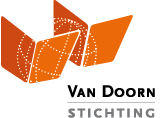
Bedankt!
Bedankt dat je wilt bijdragen aan dit project! Vul hieronder het formulier in en je wordt naar een iDeal pagina gebracht om de betaling te kunnen doen.
